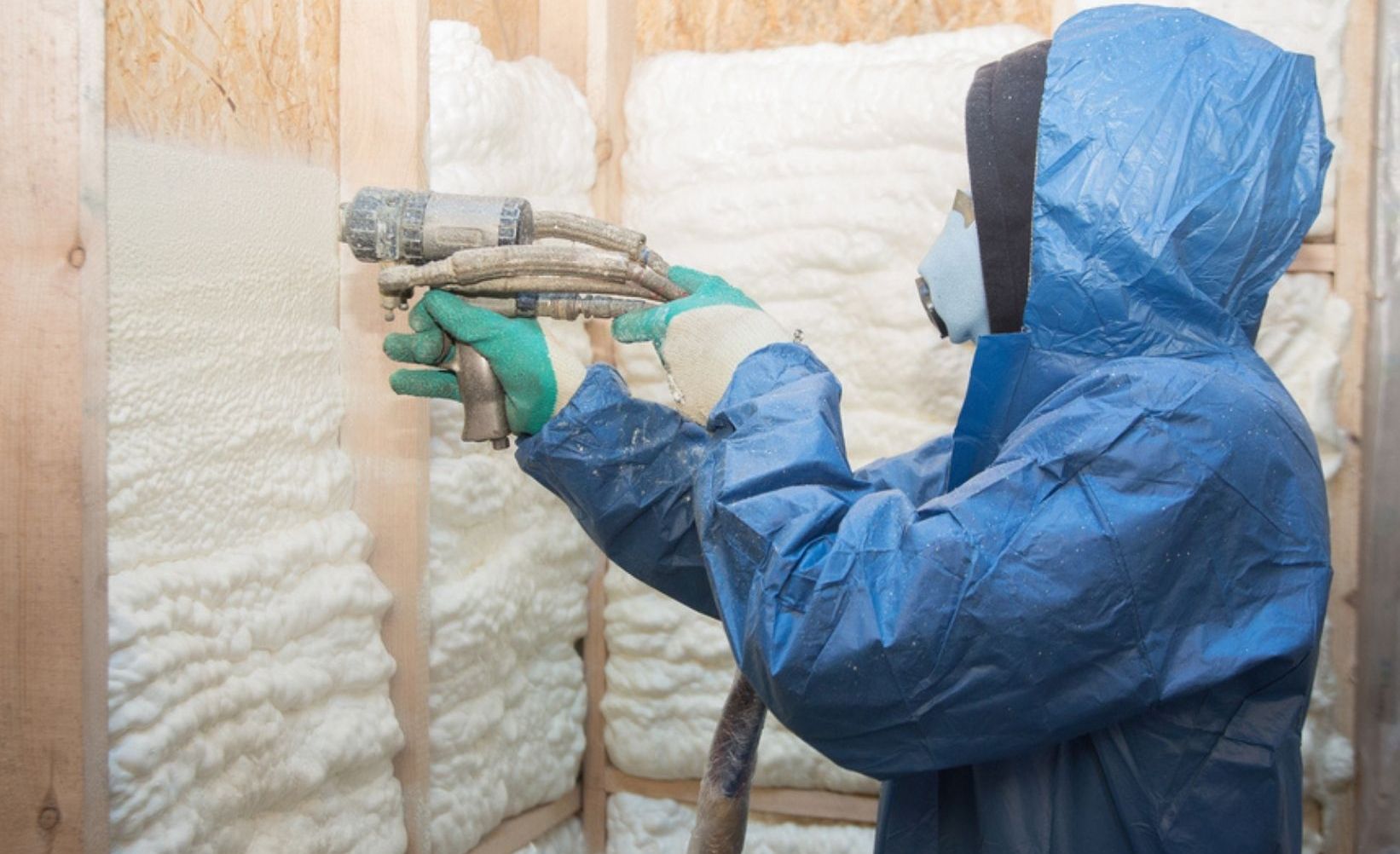Spray Foam Insulation vs Traditional Insulation: What You Need to Know
Spray foam insulation - also sometimes referred to as foam filler, insulation foam, or expanding foam filler - is an increasingly popular eco-friendly insulation choice. But how does it measure up in comparison to other types of insulation? Here, we explore how spray foam insulation compares with fibreglass insulation and cellulose insulation.
What Is Spray Foam Insulation?
Spray foam insulation is typically made from polyurethane, filled with air bubbles. Polyurethane sprays can contain harsh chemicals, so you do need to exercise care when using foam filler to insulate your home.
Spray foam insulation can have multiple uses aside from providing a good source of insulation for cavity walls, attics, and crawl spaces. After it’s been sprayed, this type of insulation begins to expand as it dries, becoming more solid in the process.

Expanding foam insulation can also be used to:
- Fill gaps in cavity walls that are otherwise tricky to insulate
- Prevent draughts
- Provide sound proofing
- Prevent air leaks
- Improve the energy efficiency of your home
Bear in mind that spray foam insulation can be a little more expensive than some other types of insulation, but it can be more effective in other ways.
What Are The Benefits Of Spray Foam Insulation?
Spray foam insulation is most commonly used in older properties that have thinner wall cavities that are unsuited to other types of insulation. Spray foam insulation has multiple benefits, including:
- Lightweight and low-density
- Resistant to heat flow
- High energy absorption rate
- Easy to install (bear in mind that spray foam insulation should be installed by a professional)
- It can help to enhance the structural integrity of a property - speak to a building professional if you’re considering using foam filler to provide extra structural support to your home
- Makes thinner walls more resistant by creating an airtight barrier around your home, helping to improve your carbon footprint as a result
- Helps to reduce the likelihood of mould, as there’s less opportunity for water to get in
Types Of Spray Foam Insulation
There are two main types of spray foam insulation: open cell spray foam and closed cell spray foam.
Open Cell Spray Foam Insulation
Open cell spray foam can be used to provide internal insulation in walls, lofts, and roofs; be mindful that your roof will need to be in relatively good condition if you’re considering spray foam insulation - address any repairs before installing any new insulation. Open cell spray foam insulation has a lower density than closed cell spray foam insulation, and it can be more affordable too.
This type of foam filler tends to feel spongier than closed cell spray foam, but it’s also more effective at blocking out noise, so can be helpful when it comes to soundproofing a room.
If you’re going for open cell spray foam insulation rather than closed cell spray foam, you’ll need to use a thicker layer - a building professional will be able to advise if you’re unsure which is the right type of foam filler for you.
Closed Cell Spray Foam Insulation
Closed cell spray foam insulation feels a little bit different when it’s set; open cell spray foam insulation can be easily compressed with a hand once it’s installed, but closed cell spray foam is much more rigid when it sets. This is because its closed cell structure contains lots of separate pockets of gas, which affect how quickly heat can move through it.
Extruded polystyrene sheets (XPS) and expanded polystyrene sheets (EPS) are two of the most common types of closed cell spray foam insulation; with these types of insulation, beads of foam are placed within a mould before heat or steam is applied to create a closed cell structure.

Closed cell spray foam is effective at stopping air or water from getting into walls and causing damp or other forms of damage. This type of spray foam insulation is often used in commercial buildings, and it’s also the best choice if you need to reduce the risk of pests, such as mice and other rodents.
Spray Foam Insulation vs Fibreglass Insulation
Spray foam insulation has a higher R value (the unit used to measure the heat resistance of insulation) than fibreglass insulation, which makes foam filler a more energy-efficient option for most homes.
What’s more, spray foam insulation is typically more watertight than fibreglass insulation, which is known to crack under pressure from moisture.
Spray foam insulation does things that fibreglass insulation can’t, such as decreasing dust and other air pollutants to benefit your home’s carbon footprint. Spray foam insulation also helps to resist mould, and it can be used to seal cracks in open wall cavities, making it a more versatile insulation option.
Both expanding foam filler and fibreglass insulation are incredibly durable, and they could have a lifetime of up to 50 years once installed, if treated properly.
Although spray foam insulation can be more expensive to install, roughly 100mm of foam filler is equivalent to around 170mm of fibreglass insulation, meaning less insulation may go slightly further.
Spray Foam Insulation vs Cellulose Insulation
Cellulose insulation is a good eco-friendly insulation option, as it’s made using recycled paper sources. Spray foam insulation may seem like a more fire-resistant option for insulating your home. However, cellulose insulation with added boric acid or ammonium sulphate can also be a fire-resistant insulation option.
How To Install Spray Foam Insulation

Spray foam insulation contains isocyanates, which can cause skin irritation, and can prove problematic for people with asthma or respiratory problems. This may influence your decision as to whether spray foam insulation is the right choice for your home.
Spray foam insulation shouldn’t be installed too close to electrical boxes or ceiling lights, and it should never be used in a property that has a thatched roof, so it’s not suitable for all homes.
If you do decide to go ahead with foam filler, it’s recommended that you should always get this installed by a professional instead of trying to do it yourself. If it’s just a small gap that you’re trying to fill or top up, you may be able to do this by yourself, but you will need to make sure your eyes, nose, and mouth are covered, while gloves and long sleeves to protect your skin are also advisable.
Spray foam insulation can be difficult to remove from a property once installed, so make sure you’re fully confident with your insulation choice before installing foam filler in your home. If you have any questions about spray foam insulation or any other types of insulation, please visit: https://www.uvalueinsulations.co.uk/contact or phone: London: +44 20 3481 1322 or Manchester: +44 151 546 3260.

